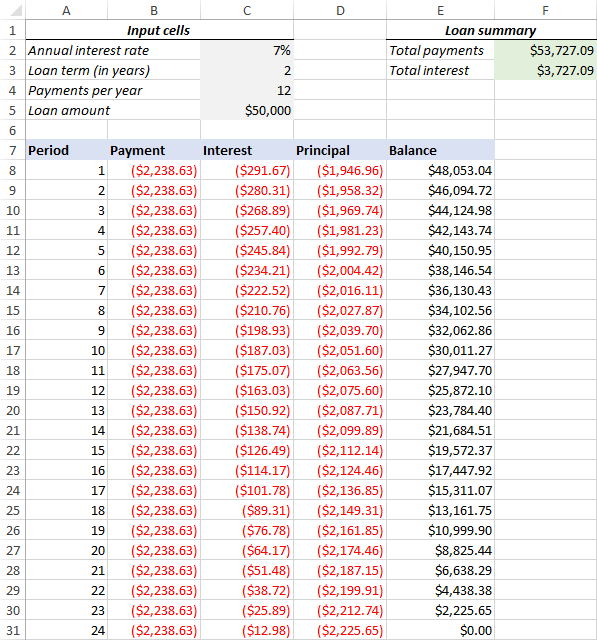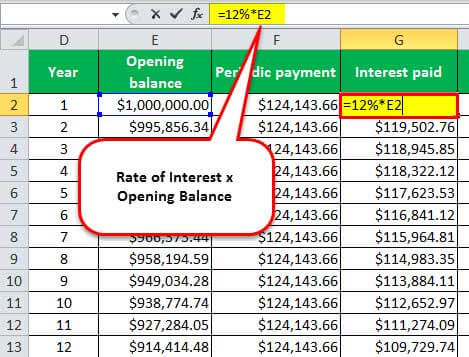

Highlight of this Table is, it will display only that data for which the Table is calculated using the input data entered by the User. When you copy the formula down, it will change to ROW(A2) which will return a 2, and so on.Namaste! This table is prepared by me after learning the PMT function, if and if error, references(absolute & relative) functions in MS Excel. Instead of putting the formulas in the worksheet, use ROW(A1) where the 1 needs to go. You should see that the balance reaches zero with the last payment.Īlternate Strategy: Anytime that you have to enter the numbers 1 to nn for a formula, there is a cool alternative. The ending balance should be within a penny of zero.Īdditional Details: To test that the table is correct, scroll to the last row.Double-click the fill handle to copy the formulas for all months. Select the three cells that contain the principal, interest, and balance calculations.For the Balance formula, use the previous balance minus this month's principal payment.Use the mouse to select the first P in PPMT in the formula bar.

Use the F2 key or double click the cell in order to edit the formula. Edit the formula and change PPMT to IPMT. Copy this formula to the Interest Payment column.Press F4 and type the closing parenthesis. Type a minus sign and click on the price in B1. Press the F4 key three times so that a dollar sign appears before the column number. The rate is B3/12, but after clicking on B3, press the F4 key to add the dollar signs. The only difference from the PMT function is the addition of the period number as the second argument. The syntax is =PPMT(rate, per, nper, pv,, ).



 0 kommentar(er)
0 kommentar(er)
